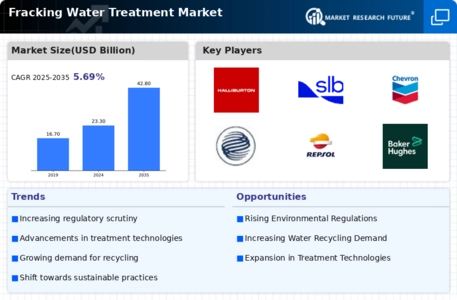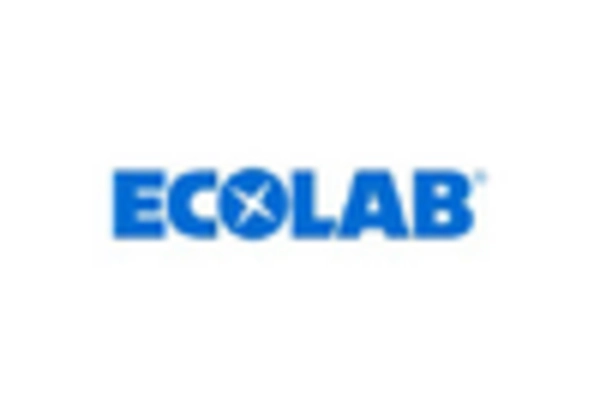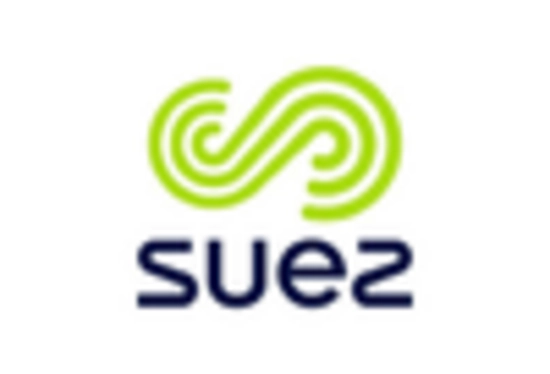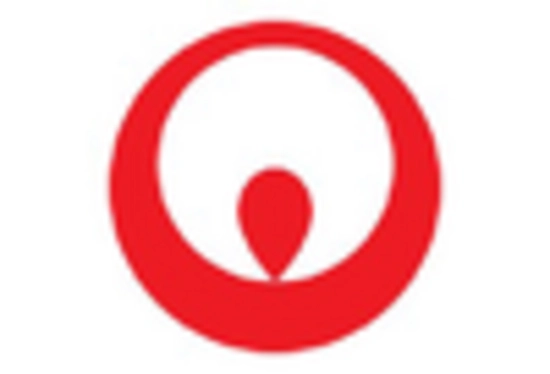Rising Water Scarcity
The increasing scarcity of freshwater resources is a critical driver for the Fracking Water Treatment Market. As populations grow and industrial demands escalate, the availability of clean water diminishes. This scarcity compels the oil and gas sector to seek innovative solutions for water management, particularly in fracking operations. The treatment of produced water not only conserves freshwater but also mitigates environmental impacts. According to recent estimates, the volume of water used in hydraulic fracturing has surged, with some regions reporting a 30 percent increase in water consumption for fracking activities. Consequently, the Fracking Water Treatment Market is poised to expand as companies invest in advanced treatment technologies to recycle and reuse water, thereby addressing both operational needs and environmental concerns.
Growing Demand for Water Reuse in Fracking
The increasing demand for water reuse in fracking operations is a notable driver for the Fracking Water Treatment Market. As the industry faces mounting pressure to reduce freshwater consumption, the emphasis on recycling produced water has intensified. This shift is not only economically beneficial but also environmentally responsible, as it minimizes the ecological footprint of fracking activities. Recent studies indicate that up to 90 percent of produced water can be treated and reused, significantly reducing the need for new freshwater sources. The market for water reuse technologies is expected to grow substantially, with projections indicating a potential market size increase of over 15 percent annually. As the industry adapts to these changing dynamics, the Fracking Water Treatment Market is set to thrive, driven by the imperative to implement effective water reuse strategies.
Increased Investment in Sustainable Practices
The shift towards sustainability is a significant driver for the Fracking Water Treatment Market. Companies are increasingly recognizing the importance of sustainable water management practices, not only to comply with regulations but also to enhance their corporate social responsibility profiles. Investments in water treatment technologies that promote recycling and reuse are becoming more prevalent. This trend is reflected in the rising number of partnerships between oil and gas companies and technology providers focused on sustainable solutions. Market analysis suggests that the investment in sustainable water treatment solutions could reach billions of dollars in the next few years. As the industry moves towards more sustainable practices, the Fracking Water Treatment Market is likely to experience robust growth, driven by the demand for eco-friendly treatment options.
Technological Innovations in Treatment Processes
Technological advancements play a pivotal role in shaping the Fracking Water Treatment Market. Innovations in treatment processes, such as membrane filtration, advanced oxidation, and bioremediation, enhance the efficiency and effectiveness of water treatment. These technologies not only improve the quality of treated water but also reduce operational costs for companies engaged in fracking. For instance, the introduction of mobile treatment units allows for on-site processing, minimizing transportation costs and time. The market for these technologies is projected to grow significantly, with estimates suggesting a compound annual growth rate of over 10 percent in the coming years. As the industry embraces these innovations, the Fracking Water Treatment Market is likely to witness a surge in demand for sophisticated treatment solutions.
Regulatory Compliance and Environmental Standards
Regulatory pressures and stringent environmental standards are increasingly influencing the Fracking Water Treatment Market. Governments and regulatory bodies are implementing more rigorous guidelines to ensure that wastewater from fracking operations is treated effectively before disposal or reuse. This trend is driven by growing public concern over environmental impacts and the need for sustainable practices in the oil and gas sector. Compliance with these regulations often necessitates investment in advanced treatment technologies, thereby driving market growth. Recent data indicates that regions with strict regulatory frameworks have seen a 25 percent increase in the adoption of water treatment solutions. As companies strive to meet these standards, the Fracking Water Treatment Market is expected to expand, presenting opportunities for innovative treatment providers.

















Leave a Comment